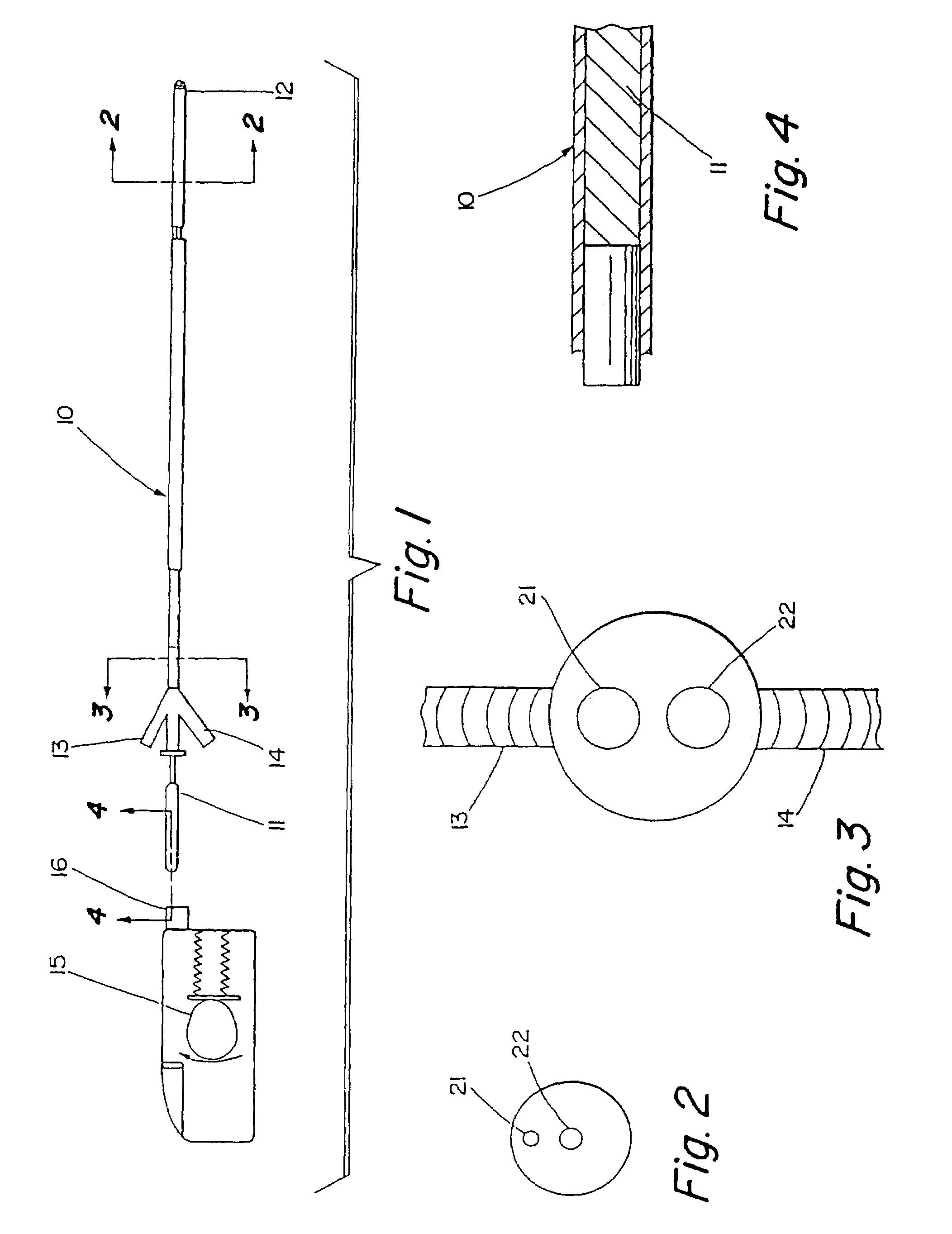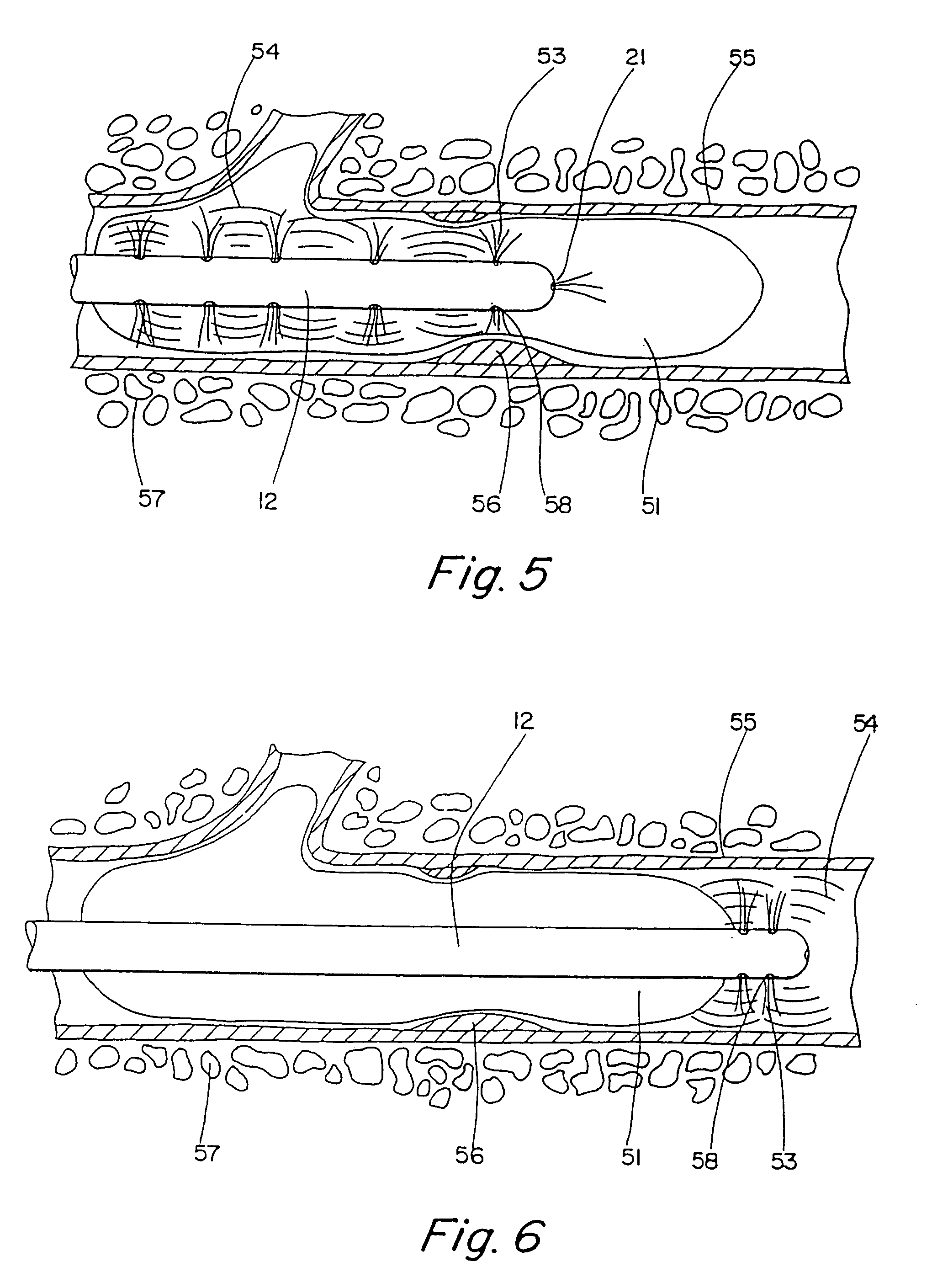Thrombolysis device
a thrombolysis device and thrombolysis technology, applied in the field of intravascular thrombolysis, can solve the problems of thrombosis, thrombosis, and life-threatening clots in blood vessels, and none is particularly adapted for thrombolysis, so as to facilitate the dislocation, and facilitate the dissolution of thrombosis
- Summary
- Abstract
- Description
- Claims
- Application Information
AI Technical Summary
Benefits of technology
Problems solved by technology
Method used
Image
Examples
example
[0043]To prove evaluate the effectiveness of the present invention, an in vitro experiment was performed to evaluate the advantage, if any, of using the motion catheter to disperse clots rather than existing technology. Blood clots were created in a test tube. The weight of each clot was measured prior to experimentation. The clots were then treated with urokinase at a rate of 5000 IU / ml for 5 minutes to a total of 15,000 IU. The clot (thrombus) weights were measured initially and finally to determine the amount of lysing that had taken place. One of the groups (Group 1) was used as a control. Nothing was done to the Group 1 thrombi except initial and final weighing. Another group (Group 2) was treated with the same amount of lysing agent, but the lysing agent was dispersed through the motion catheter while the catheter was being very slowly vibrated, the catheter was placed proximal to the clot in similar fashion as was the aforementioned group. In Group 3, the motion catheter was ...
PUM
 Login to View More
Login to View More Abstract
Description
Claims
Application Information
 Login to View More
Login to View More - R&D
- Intellectual Property
- Life Sciences
- Materials
- Tech Scout
- Unparalleled Data Quality
- Higher Quality Content
- 60% Fewer Hallucinations
Browse by: Latest US Patents, China's latest patents, Technical Efficacy Thesaurus, Application Domain, Technology Topic, Popular Technical Reports.
© 2025 PatSnap. All rights reserved.Legal|Privacy policy|Modern Slavery Act Transparency Statement|Sitemap|About US| Contact US: help@patsnap.com



